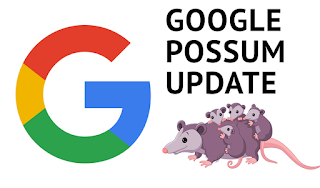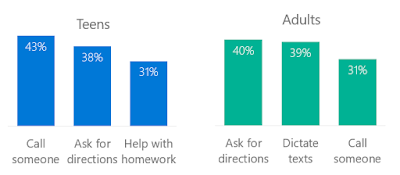Google has
a giant record of prominent search algorithm updates, search index changes, and
refreshes. Since its launch in 1998, Google has been persistently refining its
search algorithm to align search results with users’ intent. Every year, Google
comes up with almost 500+ changes in its search algorithm. However, not all but
only major updates like Panda and
Penguin can have significant impact on search results.
Search
marketers have to ensure which update significantly affect their SEO strategy.
These updates can help a user in understanding changes in rankings and organic
website traffic, and ultimately improve SEO.
Rumours
are flying about Google's updates; hence, we, at QL tech , have researched a lot. From the
research we conducted, bits of reliable information have come from several
sources about the all the possible changes which took place in 2016.
Accordingly, we have made a note for user experience.
For carving
a perfect SEO strategy and boost rankings, each and every search marketer has
to be sure about the dates when, and which updates took place.
Check out the list for all SEO pdates
published by Google in 2016.
1.
Core Ranking Algorithm Update (January):
When the update was announced by Google on 8th January 2016, most of the
webmasters were expecting it to be a Penguin update. However, on 18th January
2016, Gary Illyes, from Google, officially confirmed on Twitter that this was
not a Penguin update, but details remained cloudy.
Majorly, this update was about shift in rankings of keywords and websites.
This update caused much volatile search results for both the automated tracking
tools and the chatter in the community
2.
AdWords Shake-up (February):
The major update that took place on 23rd February 2016 relates to Removal of AdWords
ads sidebar. Google confirmed that right-column ads have been entirely removed
and rolled out 4-ad top blocks on many commercial searches. Now, only 4 ads at
the top of the search and 3 ads in the bottom of the search will be displayed,
right sidebar ad would never show up again. The site will only display product
listing ads (PLA) and knowledge graphs. Being it a paid search update, it had
significant repercussions for CTR for both paid and organic results,
particularly on competitive keywords.
3.
Mobile-Friendly updates (May):
Google indicated in the month of March that they are arranging
to boost the mobile-friendly algorithm in May, and clearly, they rolled out on
12th May 2016. This was the second version of an original Google
Mobile friendly update which was announced a year back. The new Google
mobile-friendly algorithm is hypothetical to give an additional ranking boost
for mobile-friendly websites in the mobile search results.
Since the
majority of sites tracked these days are already mobile-friendly, the impact of
this update is likely to be very minor. To ensure
that your website is mobile friendly, check the Google mobile-friendly tool and
Google’s mobile guidelines. It is never too late to gain from mobile-friendly
algorithm; it is real-time based on how quick Google crawls your web pages.
4.
Possum (September):
On 1st September 2016, Google simply
released a new update, which was nicknamed "Possum" by the SEO alliance.
The main purpose behind this update is to diversify the local results and
prevent spam from ranking. Through this update, Google applies filters on Local
Searches based on address and affiliation. Post this update, businesses that
fall outside of the physical city limits saw a huge spike in ranking. For
businesses and SEO
strategists who depend on traffic generated from local searches, Possum is significant.
Experts have quoted, “Google Possum as being the biggest update to Local search
since Pigeon in 2014.”

Possum has enhanced the importance of a searcher’s
location on local search engine results pages (SERPs). However, businesses that
share the same physical address as other organizations may face challenges. Google
does filter out duplicate content in organic search, but ‘punishes’ a business
who operates in shared offices. Such businesses may experience fall in SEO
rankings since Google aims to become more precise.
Study shows Google’s Possum update changed 64% of local
SERPs
5.
Image/Universal Drop (September):
Google dropped image results from a large percentage
of Google search results on 13th September 2016, which contributes
to the instability in search results.
Mozcast recorded a significant nearly 50% drop in search results that
feature image results appearing within the organic search results.
These updates play a huge role for all businesses and
SEO users who are merely dependent on images from search results for getting
traffic from there.
The above chart depicts scenario of 30 days (from 28th
August 2016 to 26th September 2016). This shows searchers are only
seeing images in 15.8% of search results, down from about 33%.
6.
Penguin 4.0 (September-October):
At the end of two year’s wait, Google announced its
fourth major release, Penguin, on 23rd September 2016. Primary
impact assessments were minor, but it was later revealed that the Penguin 4.0
rollout was unusually long and multi-phase. Its phase 1 and phase 2 was
announced on 27th September 2016 and 6th October 2016
respectively. Penguin was first released
in April 2012.
 Based on this update, Penguin's data is refreshed in
real-time, so changes will be noticeable much quicker, typically taking effect
shortly after Google recrawls, and reindexs a page. Penguin now devalues spam
by adjusting ranking based on spam signals, rather than affecting ranking of
the whole site.
Based on this update, Penguin's data is refreshed in
real-time, so changes will be noticeable much quicker, typically taking effect
shortly after Google recrawls, and reindexs a page. Penguin now devalues spam
by adjusting ranking based on spam signals, rather than affecting ranking of
the whole site.
This update has its impact on all levels of domain,
folders, pages and probably also keywords and keyword groups. So whatever that
goes into the organic rankings will now be affected by the Penguin algorithm on
a fine level. Here, it
would be tougher to analyse “small penguin penalties” in many cases.
The Google Penguin positive or negative signal is now
recalculated on the crawl.
The penguin updates have corresponded to an algorithm
temperature spike (113°) on 27th September and had had one final
peak on 6th October (116°)
1.
Phantom 3 (November – unconfirmed by Google):
There was a major algorithm update on 19th
November 2016. No one has exact clue about what it is. However, this update is
related to Quality update in relation with the previous phantom update 2 of
Google. Due to the lack of information (or confirmation) from Google, whatever
has affected the search rankings is referred as phantom 3 update. The said update seemed to be connected with
the appearance or removal of rich snippets in the SERPs.
8.
New Roll out (November-December):
In order to filter out fake news sites, or rather,
promote higher quality news sites; it seems that Google has worked on tweaking
the top stories algorithm. This is around Google's efforts to hide fake news
including banning some Ad Sense publishers.







